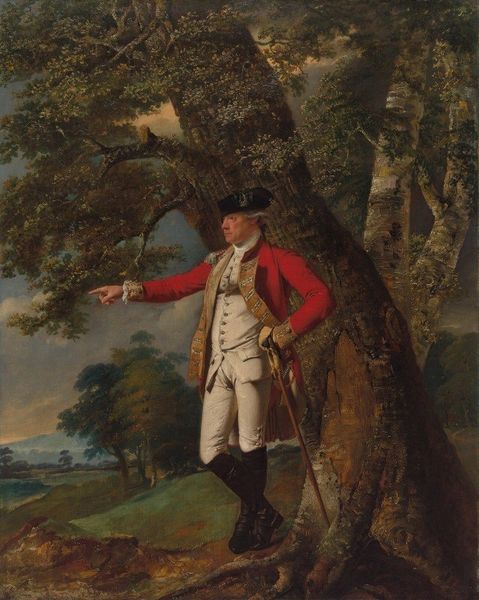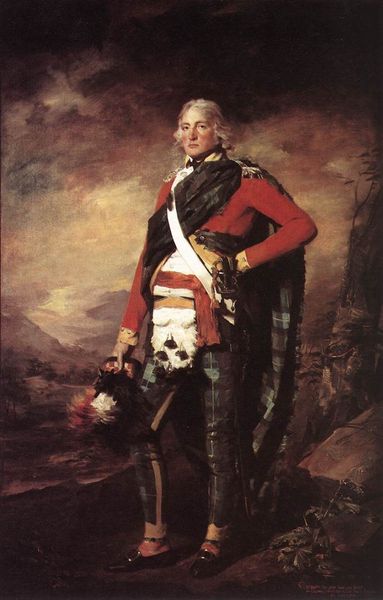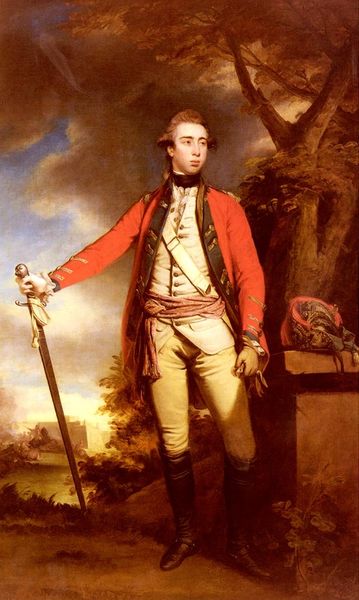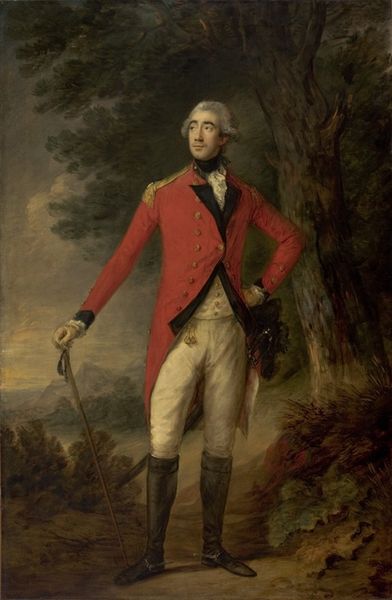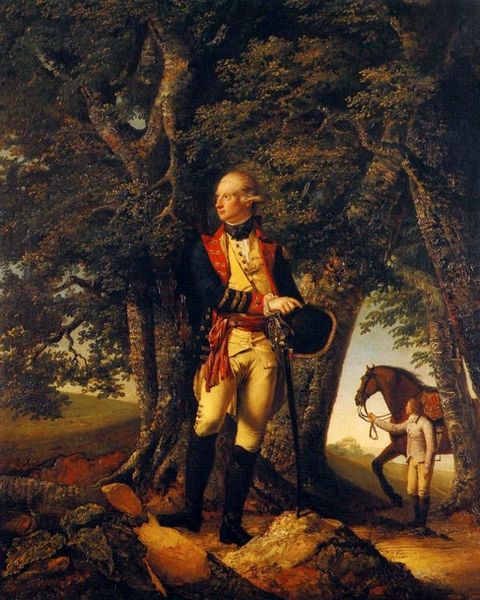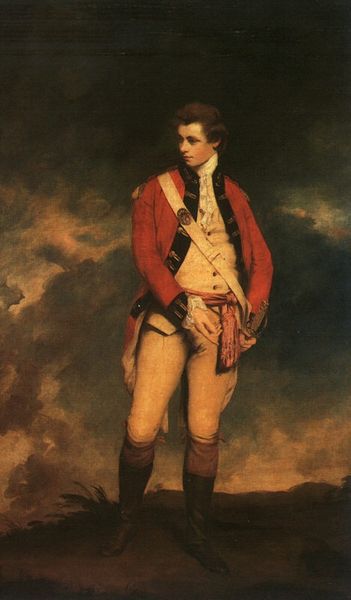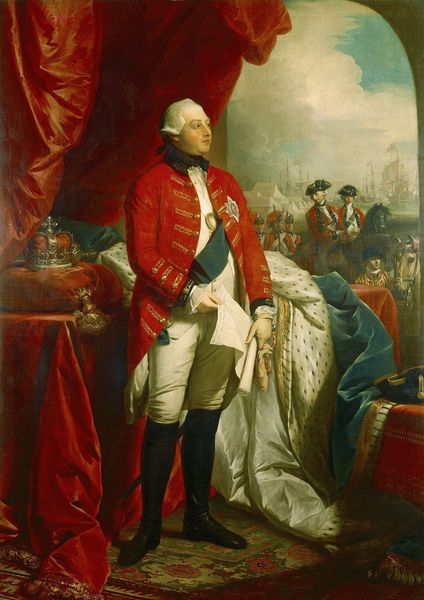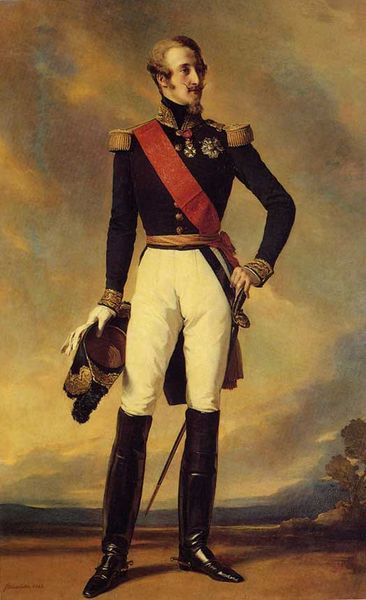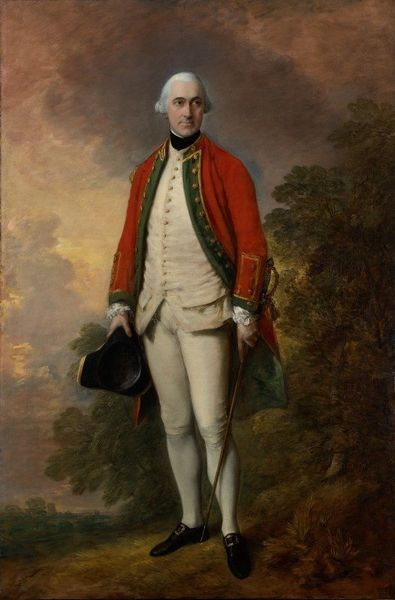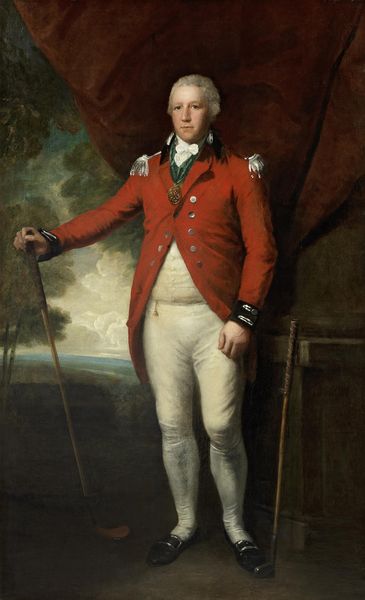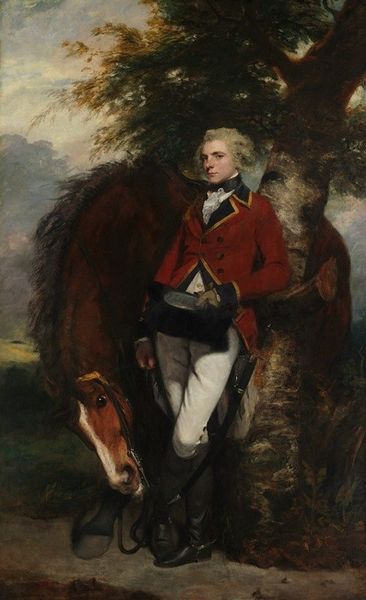
painting, oil-paint
#
portrait
#
painting
#
oil-paint
#
landscape
#
figuration
#
romanticism
#
history-painting
Dimensions: 240 x 151 cm
Copyright: Public domain
Editor: This is "Captain Hay of Spot", an oil painting by Henry Raeburn, made around 1800. The subject has such a stoic pose, yet the soft landscape in the background gives it a dreamy feel. How do you interpret this work? Curator: The painting strikes me as deeply embedded in its socio-political moment. Here we see Captain Hay, not just as an individual, but as a symbol of British military power at the height of empire. The Romantic landscape setting – itself a coded signifier of national identity – serves to naturalize his authority, subtly legitimizing colonial ventures. Editor: That’s a really interesting point! So, even his stance contributes to this idea of authority? Curator: Precisely! Consider the way he casually leans on his rifle. It's not just a prop, it’s an assertion of dominance. His calm demeanor tells us much about the perceived natural order of things, the confidence with which he asserts his position within society, and, by extension, Britain's place on the world stage. How does this relate, in your opinion, to contemporary discourses about power and representation? Editor: I suppose today, we'd be much more critical of the implied glorification of military power. We would probably analyze the perspective from which the image is painted. Who are the "other" people outside the frame who may have suffered from the policies Captain Hay supported? Curator: Exactly. And by engaging with that critique, we gain a richer understanding of both the artwork and the historical forces that shaped it. It allows us to unpack not only Raeburn’s artistic choices but also the prevailing ideologies that undergirded British society at the time. Editor: I see. So by viewing "Captain Hay of Spot" through a critical lens, we can start discussing broader issues surrounding the legacies of colonialism and their impact today. Thanks for your insights! Curator: My pleasure. It's vital to remember that these artworks are not static objects but dynamic sites for ongoing dialogues about power, identity, and justice.
Comments
No comments
Be the first to comment and join the conversation on the ultimate creative platform.
